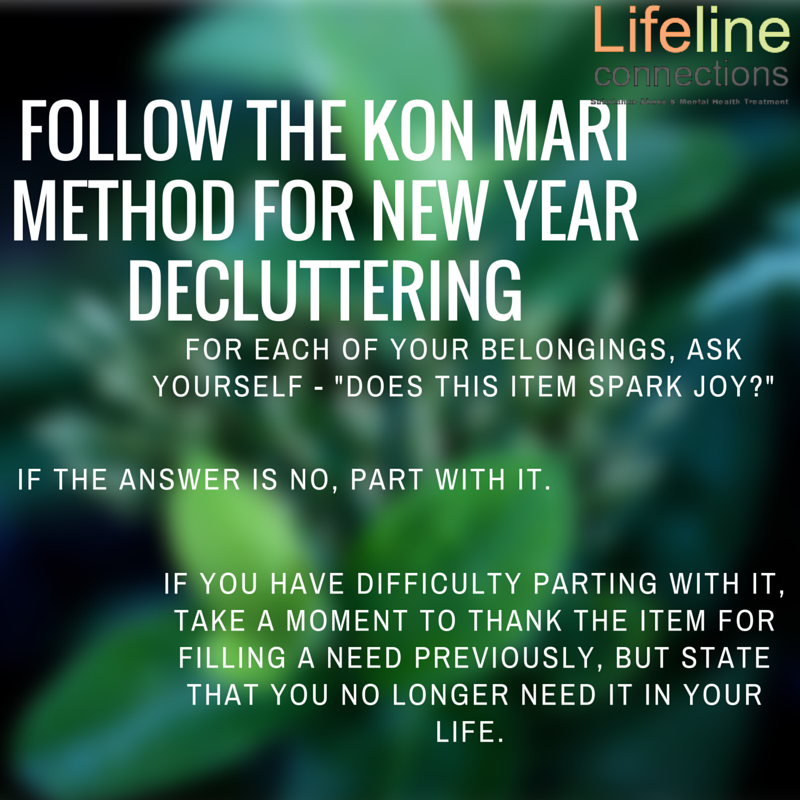
Letting Go and De-Cluttering
This past holiday I was able to finish one of the books on my “must read” list —The Life-Changing Art of Tidying Up: The Japanese Art of Decluttering and Organizing by Marie Kondo. I originally purchased this book with the intention of learning some quick and easy tips to tidy up my house, but I ended up getting a lot more out of it than that.
Marie Kondo has carved out a fascinating professional niche for herself as what you might call an “organizational consultant,” and she’s been doing it for more than 10 years now. Unlike most kids, she claims to have spent her childhood tidying up and reading about different ways to do so. Through trial and error, she was able to create and perfect her own method — which she dubbed the Kon Mari method — that would go on to kickstart her career and help millions of people all over the world.
So what makes the Kon-Mari method so different from other tidying strategies? Firstly, her method requires her readers to evaluate each of their belongings carefully and ask themselves: Does this item really spark joy? If the answer is no, toss it; if the answer is yes, keep it. What a simple concept, I thought, and immediately gathered all my clothing and laid it out on the floor. I looked at each piece thoughtfully and asked myself, “Does this spark joy?” With certain items, I knew right away, but a lot of items weren’t as easy. I wasn’t sure that they really sparked joy, but I couldn’t bring myself to part with them. After a moment of deliberation, I decided to follow her instructions in cases such as these, and quietly thanked the object for being there when I needed it and for everything it had given me, and told myself that I no longer had any use for it at this time in my life.
This got me thinking about how many situations, people, objects, etc, we’ve held on to simply because we were afraid to let them go. What’s the reason for this? Obviously, fear is what ties us to these things — fear of letting go of something in the past, or fear of not knowing whether we might need something in the future. But is the reason we can’t get over this fear, the reason we can’t let go of an object, really more to do with the way we’re letting go? Simply thanking the item and showing gratitude made it that much easier to part with.
This was by far the most interesting part of the book for me: how Marie Kondo spoke about objects, as if they had feelings and emotions. When you take a closer look, it’s apparent that there is another component to her method that has nothing to do with tidying at all, per se, and more to do with appreciation and gratitude for the objects that come in and out of our lives, whether they truly spark joy or not.
She says, in one part of the book, that every time she comes home she greets her house. She thanks it for still being there and for keeping her belongings safe. She does the same thing with clothing. She thanks her clothing for keeping her warm and dry. Initially, I found this to be a somewhat silly concept; but when I thought about it more, I realized it boiled down to gratitude, especially for the little things. And I can say with full certainty that, since doing this myself, I am calmer, happier, and more grateful for all I have.
By following the Kon-Mari method, I was able to learn how to let go, how to be grateful, and how to have a home surrounded by things that spark joy. I now know what to let go of, and what to keep.
